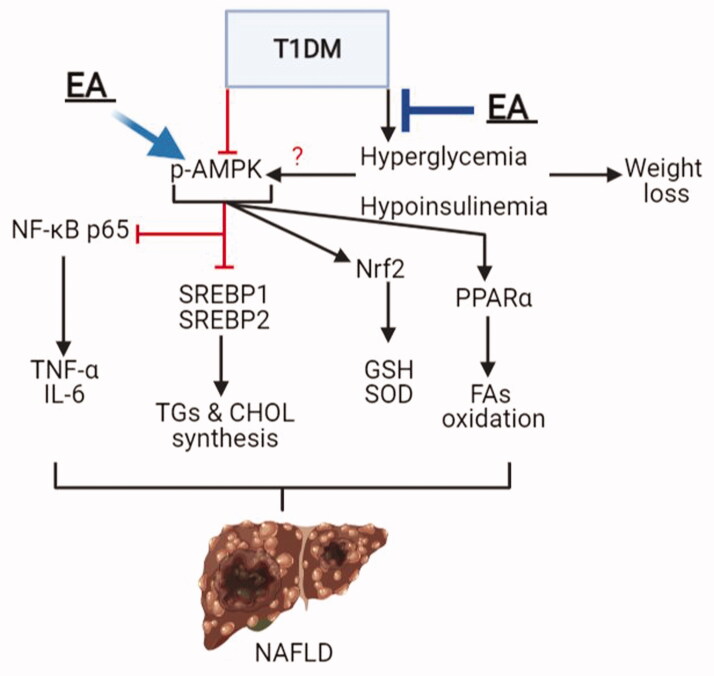Figure 7.
A graphical summary demonstrating the possible mechanism of protection afforded by ellagic acid (EA) against type 1 diabetes mellitus (T1DM)-induced liver damage and hepatic steatosis. In the liver, AMPK inhibits cellular inflammation and cytokine synthesis (i.e., tumour necrosis factor-α (TNF-α) and interleukin-6 (IL-6)) by inhibiting the transcription factor, NF-κB. Also, AMPK inhibits triglycerides (TGs) and cholesterol (CHOL) synthesis by suppressing the transcription factors SREBP1 and SREBP2, respectively, as well as increasing fatty acid synthesis mediated by activating PPARα. In addition, AMPK stimulates the cellular antioxidant system by activating Nrf2 and subsequent increases in the levels of glutathione (GSH) and superoxide dismutase (SOD). T1DM-induced hyperglycaemia and hypoinsulinemia are associated with a significant reduction in hepatic AMPK activities (p-AMPK) and increased risk for the development of non-alcoholic fatty liver disease (NAFLD) due to increased hepatic oxidative stress, inflammation, and lipid accumulation. EA prevents T1DM-induced liver damage and the progression to NAFLD by its hypoglycaemic effect and its ability to stimulate hepatic AMPK activity.

